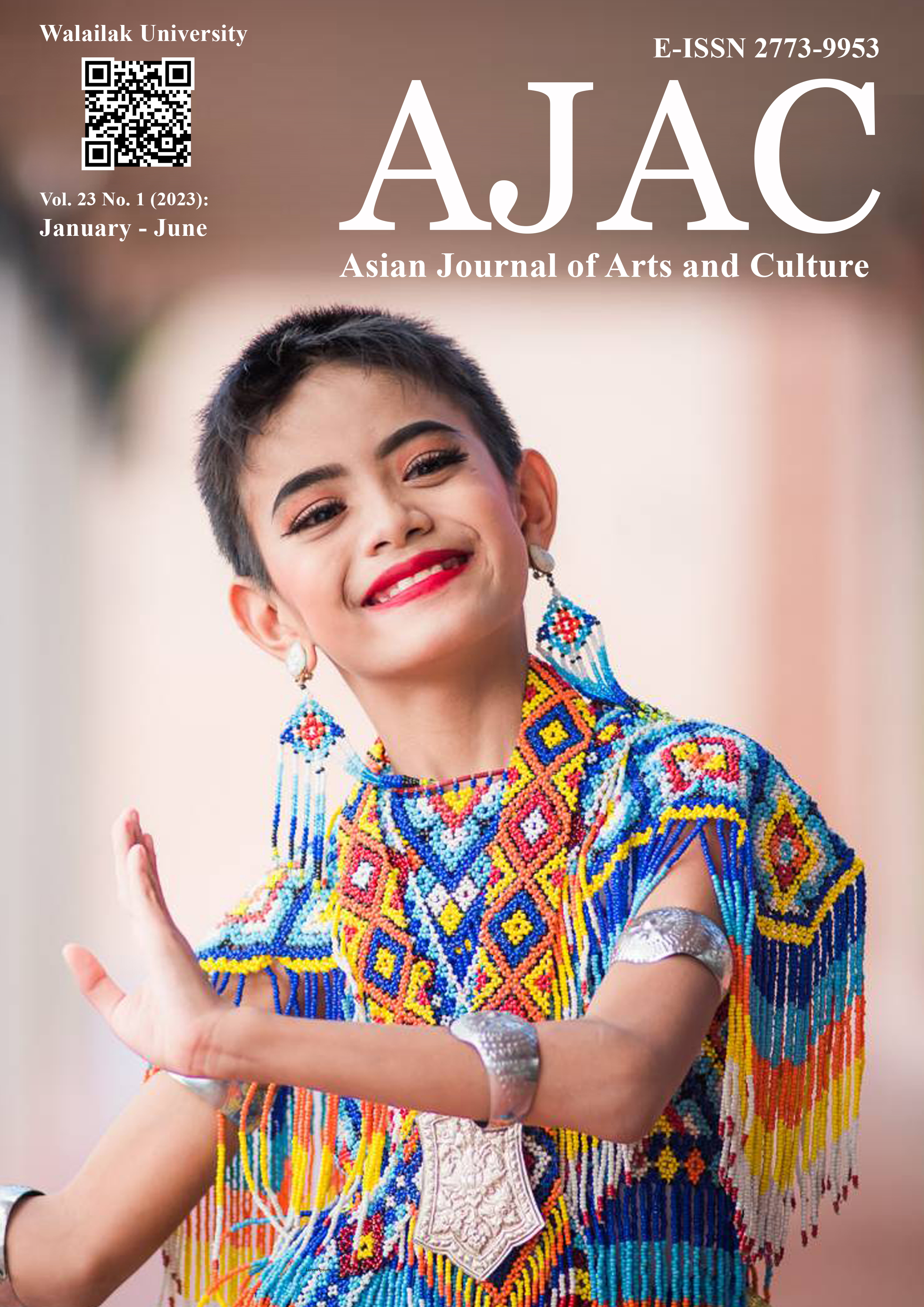Research on The Visual Design of Sichuan Dialect Emoticons
Main Article Content
Abstract
The regional features contained in dialects cannot be compared to those of official languages, although dialects are viewed as less elegant. The younger generation perceives dialect as more "native." Moreover, Putonghua, the official language of China, has gained popularity in recent years. How to preserve and advance regional dialects has become a study-worthy issue. This study examines the visual design of fusion emoticons in the Sichuan dialect. The initial objective is to examine how the Sichuan dialect implements emoticons in graphic design. The second objective is to investigate the cross-border incorporation and growth of the Sichuan dialect emoticon graphic design. The research methodology combines design-based action research and case analysis. The result is a summary of the emoticon design style that incorporates Sichuan dialect, regional characteristics, and local drama and culture. In the design practice, the researchers blended the Sichuan dialect and the panda, a unique local animal, as the major body of the combined emoticon. In the design elements extracted from history and culture, the characters of the Romance of the Three Kingdoms, which has a long history in Sichuan, were chosen for exploration; in the attempt at local drama, dynamic emoticons were created by combining the image of a Sichuan opera stage performance with Sichuan dialect. This discussion will contribute to the propagation of Sichuan dialect-based regional culture. From the perspective of cultural development and economic benefits, this paper examines the opportunities presented by the cross-border and deep integration of Sichuan dialects and emoticons in order to promote people's understanding of Sichuan dialects from multiple perspectives, provide a model for the design of the integration of idioms and emoticons, and broaden people's options for daily use
Article Details

This work is licensed under a Creative Commons Attribution-NonCommercial-NoDerivatives 4.0 International License.
© 2018 by Asian Journal of Arts and Culture, Walailak University. All rights reserved.
References
Cong, L., & Cheng, R. F. (2020). Analysis of the Formation Mechanism of Dialect Symbols in Internet Vocabulary. Journal of Xiamen Radio & Television University, 23(04), 44-49.
Daniel, T. A., & Camp, A. L. (2020). Emojis Affect Processing Fluency on Social Media. Psychology of Popular Media, 9(2), 208-213. https://doi.org/10.1037/ppm0000219
Emmanuel, E. N. (2021). New media semiotics and the rise of universal symbolic language:digital natives’ perspective amidst covid-19. Higher Education Theory and Practice, 21(1), 190-206.
Fang, Q. (2020). Design of Nanjing dialect emojis from the perspective of cultural gene inheritance. (Master’s Thesis, Nanjing University of science&Technology, China).
Jiang, Z. F. (2014). Etymology of Sichuan Dialect. Sichuan, China: Bashu Publishing House.
Lan, Y., & Zhou, W. (2010). Sichuan Dialect: Cultural Symbol of Sichuan Opera. Journal of Chinese Culture(02), 98-102.
Novak, P. K., Smailovic, J., Sluban, B., & Mozetic, I. (2015). Sentiment of Emojis. Plos One, 10(12), Article e0144296. https://doi.org/10.1371/journal.pone.0144296
Qiao, C. M. (2021). Research on dialect Communication from the perspective of New Media. Packaging Engineering, 42(14), 372-377. https://doi.org/10.19554/j.cnki.1001-3563.2021.14.051
Shen, B. J. (2016). Three Kingdoms Culture and Chengdu. Journal of Chinese Culture, 10(10), 32-35. https://d-wanfangdata-com-cn-s.webvpn.sust.edu.cn/periodical/
ChlQZXJpb2RpY2FsQ0hJTmV3UzIwMjMwMTEyEg96aHdobHQyMDE2MTAwMDcaCHB2ejdkd2dn
Sun, J., Lasser, S., & Lee, S. K. (2022). Understanding emojis: Cultural influences in interpretation and choice of emojis. Journal of International and Intercultural Communication. https://doi.org/10.1080/17513057.2022.2036790
Wang, C. A., & Xu, M. Y. (2005). An analysis of socio-psychological factors of code-switching. Journal of
Guangdong University of Foreign Studies, (02), 21-24, 46.
Wang, W. H., Zhang, Y. Z., & Zhou, J. Y. (2014). Sichuan Dialect Dictionary. Sichuan People's Publishing House.
Wu, L. (2022). Design analysis and practice of dialect network emoticons - Take Puxian Dialect as an example. Journal of Putian University, 29(03), 93-100.
Xiang, Y., & Bai, X. Q. (2017). Audience Targeting and Value Evolution of IP Development in the Cultural Industry Under the New Normal. Journal of Peking University (Philosophy and Social Sciences), 54(01), 123-132.
Xin, F. Y. (2000). Cultural linguistics. Wuhan, China: Hubei Education Press.
Yan, F. S. (2006). Research on some problems of regional culturology [Master dissertation, Nanchang University].
Yang, Y. R. (2006). Interpretation of Chongqing dialect slang. Chongqing, China: Chongqing Publishing House.
Yao, G. D., & Song, W. (2021). Research on emoticon design from the perspective of Mazu culture. Packaging Engineering, 42(22), 280-284. https://doi.org/10.19554/j.cnki.1001-3563.2021.22.035
Zhang, Y. (2018). Study on polarization and application of Shanxi Folk Culture Network expression [Master dissertation, Taiyuan University of Technology].
Zhen, J. L. (2020). Research and Practice of Network Expression Pack Design -- Taking Linyi Dialect Expression Pack Design in Shandong Province as an Example [Master's Dissertation, Shandong Normal University].


